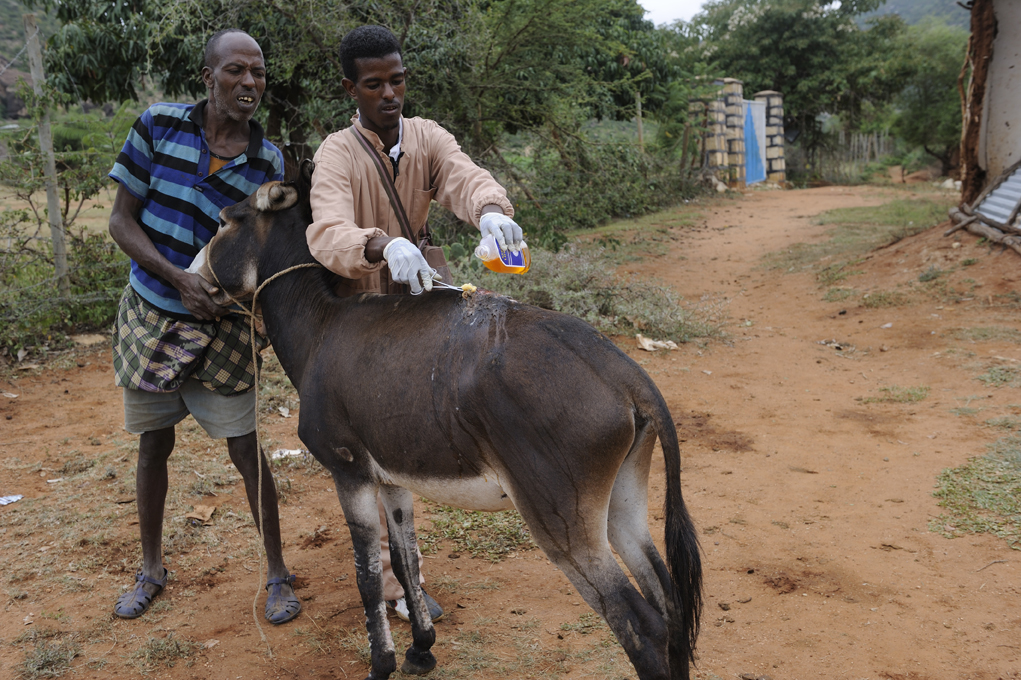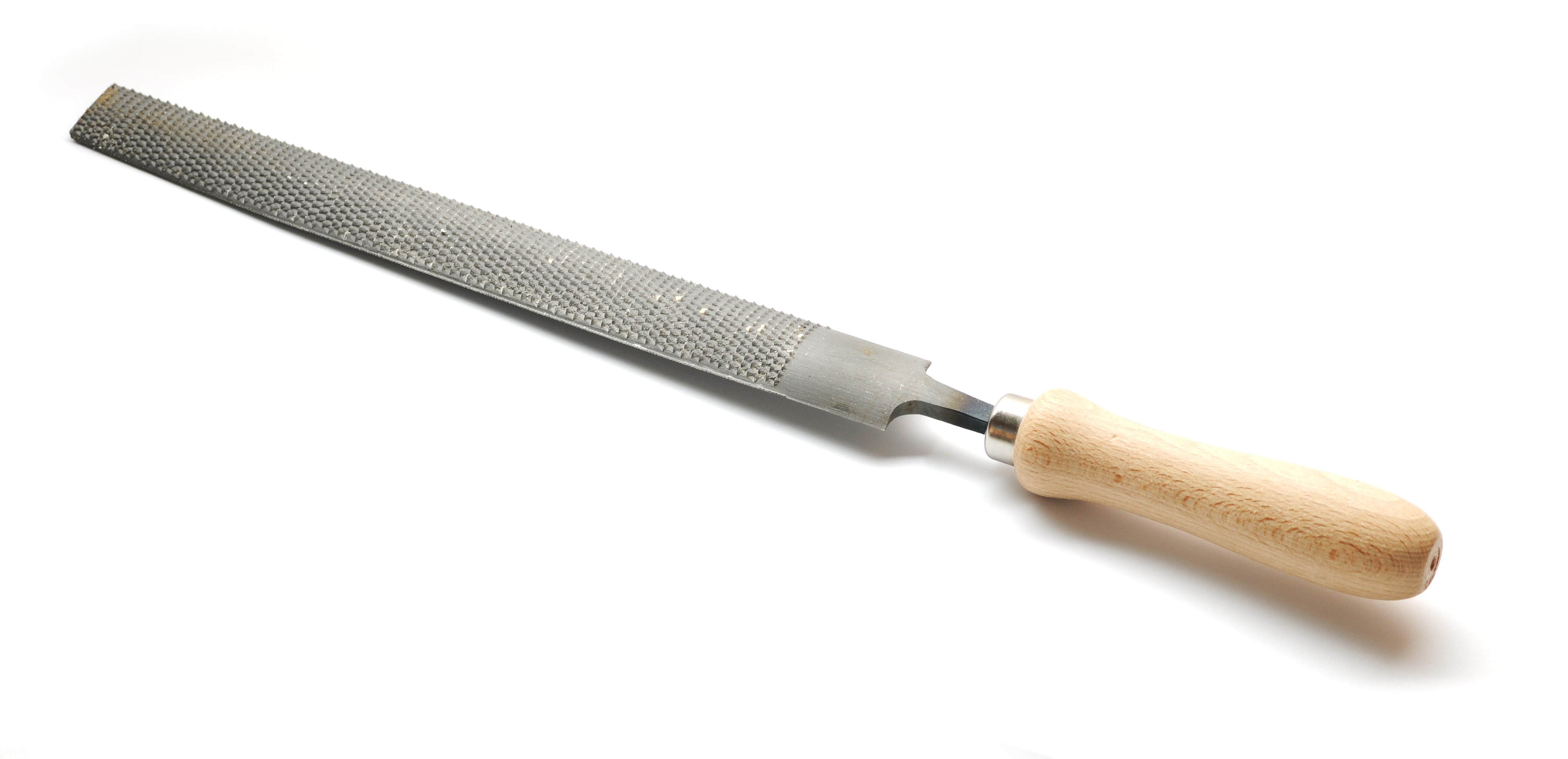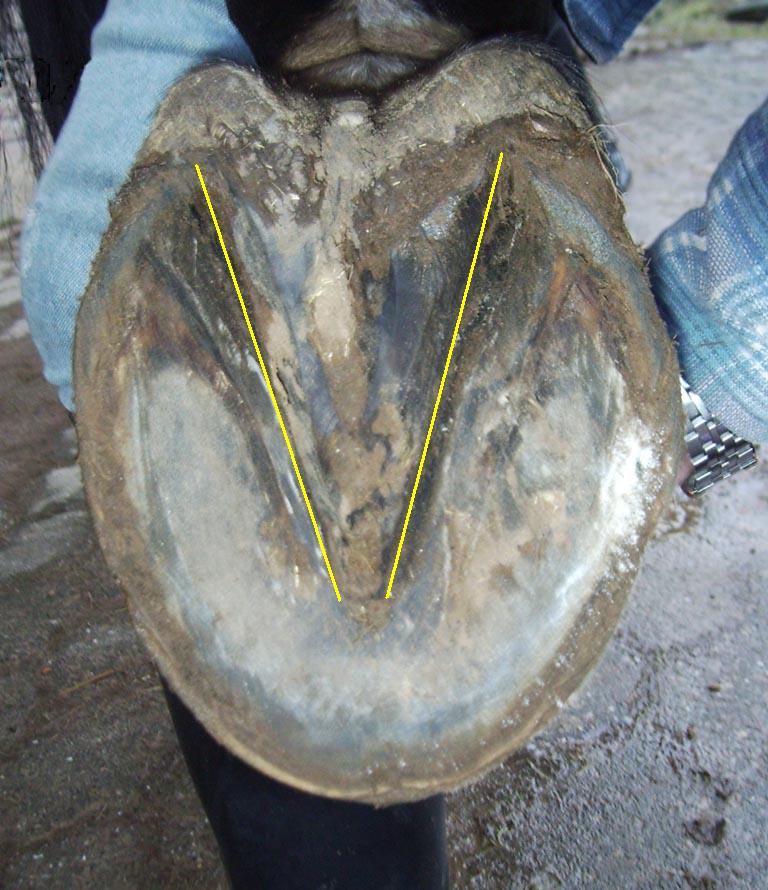|
Farrier
A farrier is a specialist in equine hoof care, including the trimming and balancing of horses' hooves and the placing of shoes on their hooves, if necessary. A farrier combines some blacksmith's skills (fabricating, adapting, and adjusting metal shoes) with some veterinarian's skills (knowledge of the anatomy and physiology of the lower limb) to care for horses' feet. Traditionally an occupation for men, in a number of countries women have now become farriers. History While the practice of putting protective hoof coverings on horses dates back to the first century, evidence suggests that the practice of nailing iron shoes into a horse's hoof is a much later invention. One of the first archaeological discoveries of an iron horseshoe was found in the tomb of Merovingian king Childeric I, who reigned from 458 to 481 or 482. The discovery was made by Adrien Quinquin in 1653, and the findings were written about by Jean-Jacques Chifflet in 1655. Chifflet wrote that the iro ... [...More Info...] [...Related Items...] OR: [Wikipedia] [Google] [Baidu] |
Horseshoe
A horseshoe is a product designed to protect a horse hoof from wear. Shoes are attached on the palmar surface (ground side) of the hooves, usually nailed through the insensitive hoof wall that is anatomically akin to the human toenail, although much larger and thicker. However, there are also cases where shoes are glued. Horseshoes are available in a wide variety of materials and styles, developed for different types of horses and for the work they do. The most common materials are steel and aluminium, but specialized shoes may include use of rubber, plastic, magnesium, titanium, or copper.Price, Steven D. (ed.) ''The Whole Horse Catalog: Revised and Updated'' New York:Fireside 1998 , pp. 84–87. Steel tends to be preferred in sports in which a strong, long-wearing shoe is needed, such as polo, eventing, show jumping, and western riding events. Aluminium shoes are lighter, making them common in horse racing where a lighter shoe is desired, and often facilitate certain ty ... [...More Info...] [...Related Items...] OR: [Wikipedia] [Google] [Baidu] |
Veterinary Medicine
Veterinary medicine is the branch of medicine that deals with the prevention, management, medical diagnosis, diagnosis, and treatment of disease, disorder, and injury in non-human animals. The scope of veterinary medicine is wide, covering all animal species, both List of domesticated animals, domesticated and wildlife, wild, with a wide range of conditions that can affect different species. Veterinary medicine is widely practiced, both with and without professional supervision. Professional care is most often led by a veterinarian, veterinary physician (also known as a veterinarian, veterinary surgeon, or "vet"), but also by paraveterinary workers, such as veterinary nurses, veterinary technicians, and veterinary assistants. This can be augmented by other paraprofessionals with specific specialties, such as animal physiotherapy or dentistry, and species-relevant roles such as farriers. Veterinary science helps human health through the monitoring and control of Zoonosis, zoonoti ... [...More Info...] [...Related Items...] OR: [Wikipedia] [Google] [Baidu] |
Horse Hoof
A horse hoof is the lower extremity of each leg of a horse, the part that makes contact with the ground and carries the weight of the animal. It is both hard and flexible. It is a complex structure surrounding the distal Phalanx bones, phalanx of the 3rd digit (digit III of the basic pentadactyl limb of vertebrates, evolved into a single weight-bearing digit in horses) of each of the four limbs, which is covered by soft tissue and keratinised (cornified) matter. Anatomy The hoof is made up of two parts. The outer part, called the hoof capsule, is composed of various cornified specialized structures. The inner, living part of the hoof, is made up of soft tissues and bone. The cornified materials of the hoof capsule differ in structure and properties. Dorsally, it covers, protects, and supports P3 (also known as the coffin bone, pedal bone, or PIII). Palmarly/plantarly, it covers and protects specialised soft tissues, such as tendons, ligaments, fibro-fatty and/or fibrocartilagin ... [...More Info...] [...Related Items...] OR: [Wikipedia] [Google] [Baidu] |
Rasp
A rasp is a coarse form of file used for shaping wood, metal, or other material. Typically a hand tool, it consists of a generally tapered rectangular, round, or half-round sectioned bar of case hardened steel with distinct, individually cut teeth. A narrow, pointed tang is common at one end, to which a handle may be fitted. Uses Rasps come in a variety of shapes—rectangular, round, and half-round—and vary in coarseness, from finest, "cabinet", to most coarse, "wood". Farriers, for example, commonly use rasps to remove excess wall from a horse's hoof. They are also used in woodworking for rapidly removing material and are easier to control than a drawknife. The rough surfaces they leave may be smoothed with finer tools, such as single- or double-cut files. Rasps are used in shaping alabaster. Saws and chisel A chisel is a hand tool with a characteristic Wedge, wedge-shaped cutting edge on the end of its blade. A chisel is useful for carving or cutting a h ... [...More Info...] [...Related Items...] OR: [Wikipedia] [Google] [Baidu] |
Horse
The horse (''Equus ferus caballus'') is a domesticated, one-toed, hoofed mammal. It belongs to the taxonomic family Equidae and is one of two extant subspecies of ''Equus ferus''. The horse has evolved over the past 45 to 55 million years from a small multi-toed creature, '' Eohippus'', into the large, single-toed animal of today. Humans began domesticating horses around 4000 BCE in Central Asia, and their domestication is believed to have been widespread by 3000 BCE. Horses in the subspecies ''caballus'' are domesticated, although some domesticated populations live in the wild as feral horses. These feral populations are not true wild horses, which are horses that have never been domesticated. There is an extensive, specialized vocabulary used to describe equine-related concepts, covering everything from anatomy to life stages, size, colors, markings, breeds, locomotion, and behavior. Horses are adapted to run, allowing them to quickly escape predator ... [...More Info...] [...Related Items...] OR: [Wikipedia] [Google] [Baidu] |
Hoof Knife
The hoof (: hooves) is the tip of a toe of an ungulate mammal, which is covered and strengthened with a thick and horny keratin covering. Artiodactyls are even-toed ungulates, species whose feet have an even number of digits; the ruminants with two digits are the most numerous, e.g. giraffe, deer, bison, cattle, goats, gazelles, pigs, and sheep. The feet of perissodactyl mammals have an odd number of toes, e.g. the horse, the rhinoceros, and the tapir. Although hooves are limb structures primarily found in placental mammals, hadrosaurs such as '' Edmontosaurus'' possessed hoofed forelimbs. The marsupial '' Chaeropus'' also had hooves. Description The hoof surrounds the distal end of the second phalanx, the distal phalanx, and the navicular bone. The hoof consists of the hoof wall, the bars of the hoof, the sole and frog and soft tissue shock absorption structures. The weight of the animal is normally borne by both the sole and the edge of the hoof wall. Hooves perf ... [...More Info...] [...Related Items...] OR: [Wikipedia] [Google] [Baidu] |
Blacksmith
A blacksmith is a metalsmith who creates objects primarily from wrought iron or steel, but sometimes from #Other metals, other metals, by forging the metal, using tools to hammer, bend, and cut (cf. tinsmith). Blacksmiths produce objects such as gates, grilles, railings, light fixtures, furniture, sculpture, tools, agricultural implements, decorative and religious items, cooking utensils, and weapons. There was a historical distinction between the heavy work of the blacksmith and the more delicate operations of a whitesmith, who usually worked in Goldsmith, gold, Silversmith, silver, pewter, or the finishing steps of fine steel. The place where a blacksmith works is variously called a smithy, a forge, or a blacksmith's shop. While there are many professions who work with metal, such as farriers, wheelwrights, and Armourer, armorers, in former times the blacksmith had a general knowledge of how to make and repair many things, from the most complex of weapons and armor to simple ... [...More Info...] [...Related Items...] OR: [Wikipedia] [Google] [Baidu] |
Frog (horse Anatomy)
The frog is a part of a horse hoof, located on the underside, which should touch the ground if the horse is standing on soft footing. The frog is triangular in shape, and extends midway from the heels toward the toe, covering around 25% of the bottom of the hoof. The frog is a V-shaped structure that extends forward across about two-thirds of the sole. Its thickness grows from the front to the back and, at the back, it merges with the heel periople. In its midline, it has a central groove ( sulcus) that extends up between the bulbs. The color of the frog varies between horses and can have no pigment making it cream colored, or with pigment fully or partially giving darker color. Its rubbery consistency suggests a role as a shock absorber and grip tool on hard, smooth ground. The frog also acts like a pump to move the blood back to the heart, a great distance from the relatively thin leg to the main organ of the circulatory system. In the stabled horse, the frog does not wear ... [...More Info...] [...Related Items...] OR: [Wikipedia] [Google] [Baidu] |
Horse Racing
Horse racing is an equestrian performance activity, typically involving two or more horses ridden by jockeys (or sometimes driven without riders) over a set distance for competition. It is one of the most ancient of all sports, as its basic premise – to identify which of two or more horses is the fastest over a set course or distance – has been mostly unchanged since at least classical antiquity. Horse races vary widely in format, and many countries have developed their own particular traditions around the sport. Variations include restricting races to particular breeds, running over obstacles, running over different distances, running on different track surfaces, and running in different gaits. In some races, horses are assigned different weights to carry to reflect differences in ability, a process known as handicapping. While horses are sometimes raced purely for sport, a major part of horse racing's interest and economic importance is in the gambling associated ... [...More Info...] [...Related Items...] OR: [Wikipedia] [Google] [Baidu] |
Anvil
An anvil is a metalworking tool consisting of a large block of metal (usually Forging, forged or Steel casting, cast steel), with a flattened top surface, upon which another object is struck (or "worked"). Anvils are massive because the higher their inertia, the more efficiently they cause the energy of striking tools to be transferred to the work piece. In most cases the anvil is used as a forge, forging tool. Before the advent of modern welding technology, it was the primary tool of metal workers. The great majority of modern anvils are made of cast steel that has been heat treated by either Case-hardening, flame or Induction_hardening, electric induction. Inexpensive anvils have been made of cast iron and low-quality steel, but are considered unsuitable for serious use, as they deform and lack rebound when struck. The largest single piece tool steel anvil that is heat treated is 1600 pounds. This anvil was made in 2023 by Oak Lawn Blacksmith. There are larger anvils tha ... [...More Info...] [...Related Items...] OR: [Wikipedia] [Google] [Baidu] |










